The Storm Demon, Father of all Monsters
from Essays
Remarks at the Fulbright NEXUS meeting on Climate Change
Banff Springs, Canada
Friday, November 9, 2012
So on my journey through turbulence, delays, lightning and then icy roads to get here, I couldn’t help but think it must be a wry climate scientists joke for all of us to be gathering in this rugged, Canadian Rockies winter wonderland, where it’s 8 degrees and snowing outside, to discuss…global warming.
I noticed that other guests in this lodge are gathered around fireplaces, laughing and drinking. But somehow I don’t see this group of climate scientists sitting very comfortably around the hearth, listening to the crackling of more carbon spewing into the atmosphere.
So I ask you to use your powers of imagination to conjure a fire for us to gather around–because I want to tell you a story. The story of a monster. The father of all monsters, in fact, according to Greek mythology.
His name was Typhon, the storm demon. The word means smoke, darkness. Typhon stole Zeus’s thunderbolts and transformed himself into the most destructive, fearsome monster in all of nature. Typhon had the scaled, coiling body and tail of a giant viper, with a fierce Schwartzenegger super-human torso that could suddenly heave itself up from the dust of a village or from the mild surf of a calm sea into a dark rage that would blacken the sky and touch the stars. Typhon’s back was covered in wings that whipped up vast, apocalyptic winds. His arms could quickly circle the world and suffocate cities. And the tips of his fingers were giant dragon-heads, spitting fire and ash. Lightning flashed from his eyes. The violence of his voice was deafening.
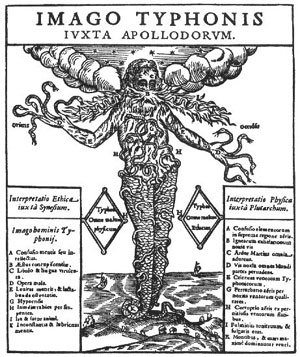
Recently, fierce Typhon fathered a little girl. Her name was Sandy. We’ll come back to her.
Over millennia, of course, Typhon has had countless children. The word typhoon comes from his name, and it has cognates in Arabic and Persian. But before modern storm forecasting, actual hurricanes were rarely given names, mostly because no one had the ability to see them coming. With advances in weather science, the urgency of keeping track of destructive weather systems during WWII gave meteorologists the idea of naming these storms.
1947 saw the birth of the first American hurricane child with a name: a boy, George. (There was another birth in 1947, by the way, that has been a much more creative, constructive force. The first Fulbright scholars went out into the world that year. You are joining a remarkable lineage, now mid-way through its seventh decade.) But back to Typhon’s children. Two years after George came the first girl, Hurricane Bess, named for First Lady, Bess Truman. I’m not sure how much she liked that.
Storm genders mixed for a few years, but starting in 1953–I guess you could say the beginning of the Mad Men years of meteorology–the guys with skinny ties started using only female name for hurricanes: that year alone saw Alice, Barbara, Carol, Dolly, Edna, down the alphabet to Tina, Vicky, Una and Wallis, for that seductive American who wrecked the royal family.

And this huge and growing dysfunctional family has worked its way sixty-some years down to ill-tempered Sandy.
What’s in a name?
Well, Jonah Berger, a marketing professor at Wharton, recently reported that:
Baby names that begin with K increased 9 percent after Hurricane Katrina in 2005. And names that start with A were 7 percent more common after Hurricane Andrew in 1992.
Berger says, “It wasn’t that people named their babies after the storms. (In fact, fewer people named their children Katrina and Andrew after each respective hurricane.) Rather, it was similar sounding names that spiked after particular storms.”
And then consider the cartoon in this week’s New Yorker Magazine showing a couple hip-deep in their flooded living room. The man says to the woman, “If they want us to take these storms seriously, they have to start giving them scarier names.”
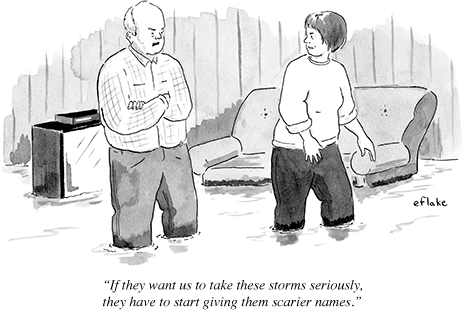
There are jokes and there is seriousness behind the origin myths of storms, the names we choose to give what attracts and repels us, the stories we tell about things we struggle to understand. My quick mix here of mythology and meteorology, etymologies and cultural history is only meant to point to the obvious: science is not the language of everyday culture, even, often, for scientists. And because of that scientific facts alone have not and will not be enough to get us to comprehend or cope with the scale of the issues our planet faces, the clouds of crisis that with that sweet name Sandy, literally gathered around my hometown within minutes, when the power went out and put half of Manhattan into a week of darkness.
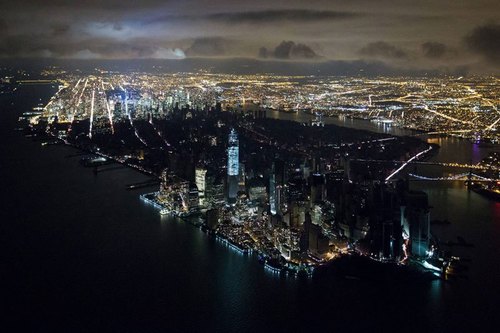
Let’s step back again to language of the Mad Men years, to 1959 to be precise. The seeds of the climate storms and changes that bring us here today go back to scientific debates that took powerful shape in 1959. In that year, two scientists provoked some weather in our intellectual discourse that matters significantly for how we think and talk about climate change – and climate change denial – and how we give name to things and ideas in a world where the children of Typhon increasingly rage wildly.
First, there was Gilbert Plass, who wrote an article in the Scientific American using for the first time together in a major journal, the expressions “greenhouse gases” and “climate change,” speculating about how one might affect the other. And later that same year, another scientist gave a famous lecture, called “The Two Cultures.” That scientist, the great, CP Snow, warned that we had “two polar groups … at one pole, literary intellectuals, at the other, physical scientists. Between the two, a gulf of mutual incomprehension.”
But Snow believed both cultures had rich knowledge to share, that the gap between them was bridgeable. He dedicated his life to that possibility. I hope our being here together is further dedication to that same conviction, that we can understand one another and that there are urgent things to say. Perhaps, though, the gap is not most urgently between us–not between the humanities and sciences. It is really more that all of us together must find the language to bridge the gap between science and the public imagination, between the dangers the world faces and the complacencies that fuel them.
We say that the Fulbright program fosters mutual understanding. And usually we talk about doing this by reaching across different cultures separated by geography. But there is also an urgent need for mutual understanding between different cultures that even share the same cities and towns and popular culture, but are divided by education, income, opportunities, histories of belief, habits of mind.
The urgency is difficult to overstate.
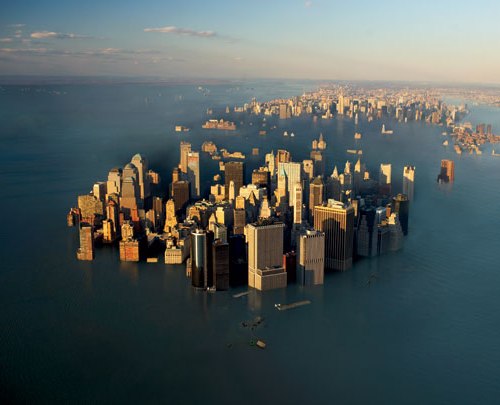
Since those two 1959 lectures–the first concerns about climate change and the blunt acknowledgment that smart people could not seem to talk to each other–since then, in 50 years, trillions of dollars have been spent in coastal development, with attendant deforestation, air and water pollution with millions of people pressed, often desperately, into flood zones or on the barren edges of growing deserts, while carbon dioxide emissions have doubled in the last decade, and sea levels have risen as much as five inches–five extra inches of water in the past half century for the children of Typhon to throw at us, while millions of others have no water at all.
The higher the water rises, the faster it flows because it faces less friction above the surface. So storm surges run inland faster and farther – drowning more of our kith and kin. The US Army Corps of Engineers calls this the “depth-damage function”: as the waters rise, the damage rises exponentially. My neighbors and I saw this with stunned surprise as Sandy “depth-damaged” New York and New Jersey with speed and ease that we were not prepared for.
What else are we not prepared for? The National Academy of Sciences recently reported that 1/10th of the Western Hemisphere’s mammals will likely not survive climate change in this century. Let me repeat that: 1/10th of all mammals in the Western Hemisphere will be wiped out. As Rebecca Greenfield at The Atlantic reports,
Hardest hit will be primates, including tamarins, spider monkeys, marmosets and howler monkeys, some of which are already listed as threatened or endangered …Nearly all the hemisphere’s primates will experience severe reductions in their ranges, on average about 75 percent.
The problem is that climate change will catch up with mammals before they have the capacity to adapt. And because of human habitation, they will have nowhere else to move.
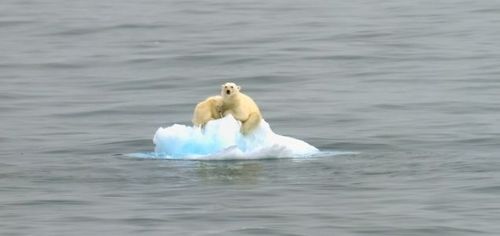
Consider human habitation itself. Consider it in just one small, tragic and beautiful place. Consider Haiti where I was last week with the Secretary of State and President Clinton to celebrate the opening of a sustainable power plant, new housing, roads and an industrial park.
It was a joyful occasion, but it doesn’t change the fact that Haiti, as I’m sure you’ve heard, happens to be directly in the path of a hurricane corridor. Each year, during the rainy season, it is battered by a rising number of tropical storms. In 2008, four hurricanes–Ike, Fay, Hannah and Gustave–struck Haiti within just 30 days. Talk about the children of Typhon. 1,000 people died. And 60 percent of Haiti’s crops.
And now this year. My own city is just beginning to pull itself out from the havoc and suffering and loss of Sandy. More than 100 dead. Thousands homeless. $60 billion of damage and counting.
But as a New York Times reporter wrote yesterday,
In Haiti Sandy destroyed 70 percent of the country’s crops. Between drought, tropical storm Isaac and Sandy, 90 percent of Haiti’s crops have been destroyed by natural disasters this year.
Let’s bring this right into this room. I see lots of coffee cups. I’m not so sure how well our over-worked, underpaid, sleep-deprived world of the academy would be prepared to lose our coffee. I had my first cup at 4:30 this morning, which is, to be honest, very, very unusual for me. But my eyes focused pretty quickly as I sat there reading that 65% to as much as 100% of entire Ethiopian coffee could be wiped out in the next 75 yrs.
Despite Kyoto, despite the kind of crushing economic, social and historical costs that I’ve just touched upon-despite the risk of caffeine withdrawl–carbon levels are still rising; they are rising faster now than they were 20 years ago.
We’ve certainly had successes and can point, for example, to how Europe has dramatically reduced carbon production: 15% in the UK in the last 20 years. But unfortunately, carbon consumption in the UK is up almost 20%. The power is just imported from elsewhere. Meanwhile, three new coal plants a week are fired up in India and China. And meanwhile, almost 50% of US power still comes from coal.
And yet, according to Al Gore, in this election cycle in the United States climate change was mentioned less than any time since 1984. Until the final hours and Sandy, of course.
The 2012 election was supposed to be, was always described to us as, a “referendum” on President Obama–or, if you take an opposing view, a “referendum” on the policies and values of the Republican Party. Take your pick. Of course, in one sense, it’s a little redundant to say an election is a referendum because, well, yes, that’s what referendum means: a vote. Every election is a referendum on an incumbent’s policies. But in this election debate, people usually meant “referendum” as “indictment.”
But I want you to think about another part of the meaning of “referendum” that comes from its Latin roots: the word, in its gerundive form, also means “referring back.”
What I want to say is that I think we should think about Sandy in that way. In a powerful sense, Sandy has been our referendum in this election. She brought one of the most crucial discourses being conducted today back to the spotlight and the public forum. And what she brought back was certainly an indictment of how little we are doing to acknowledge, lessen and adapt to dramatic climate change.
As the great writer and environmentalist Wendell Berry has written, “Whether we and our politicians know it or not, Nature is party to all our deals and decisions, and she has more votes, a longer memory, and a sterner sense of justice than we do.”
So this is an auspicious time for this second year of Fulbright Nexus collaboration into critical and creative ways to address climate change and energy needs.
Life on earth, in all its flowering, breathing, tempestuous variety is only sustainable if we keep our carbon emissions to under what? 350 ppm? 450ppm? More? We keep crossing one threshold of danger after another. The issue is not the number. The issue is now. It is our responsibility as scientists, lawyers, architects, politicians, and artists not only work to reduce these emissions, but to salvage what we can from the wreckage we have already caused.
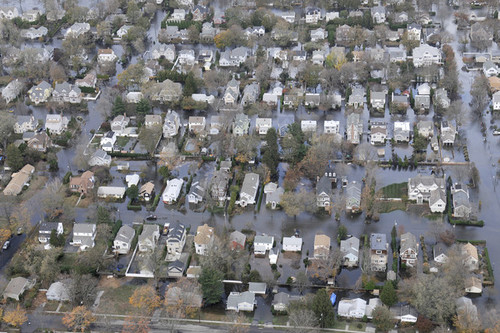
This will require creativity. All of us must become curators and stewards of a diminishing environment. And it is our responsibility–whether scientists like yourselves studying ways to provide clean water, new bio-fuels, and other environmental risk reductions as the temperatures and seas inevitably rise–or writers like myself struggling to communicate what it is like to live on a planet that is so different from what future generations may know–all of us must do something. Together.
Today–or what’s left of it–is November 9th. It seemed so felicitous to be able to talk about bridging divides, creating mutual understanding, sharing urgent ideas for change, on this specific date. Because today is the birthday of the late Carl Sagan. No one worked to bridge the cultures of science and the popular imagination with more eloquence. Sagan wrote,
It is sometimes said that scientists are unromantic, that their passion to figure things out robs the world of beauty and mystery. But is it not stirring to understand how the world actually works?…It does no harm to the romance of the sunset to know a little bit about it.
As if in answer to Tython’s wrath, which we have so dangerously fed, Sagan, that giant of science, a bard of our yearnings to understand the universe, asked urgently toward the end of his life that we work “to understand the world in order to save it.”
“Our obligation to survive and flourish,” he said, “is owed not just to ourselves, but also to that Cosmos, ancient and vast, from which we spring.”
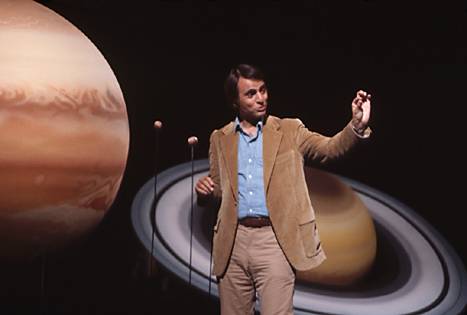
And we know that sprit of inquiry, even that eloquence, can break into political life too. It must. And we must bring it there. Senator Fulbright himself said, “With a little wisdom and foresight, surely it is not yet necessary to forsake life in the fresh air, and in the warm of the sunlight.”
By being here, you obviously agree. I’m so pleased to represent the Fulbright board, to bring greetings from President Obama and Secretary Clinton and to have the privilege of listening in on some of your wisdom and foresight this weekend.
Thank you.